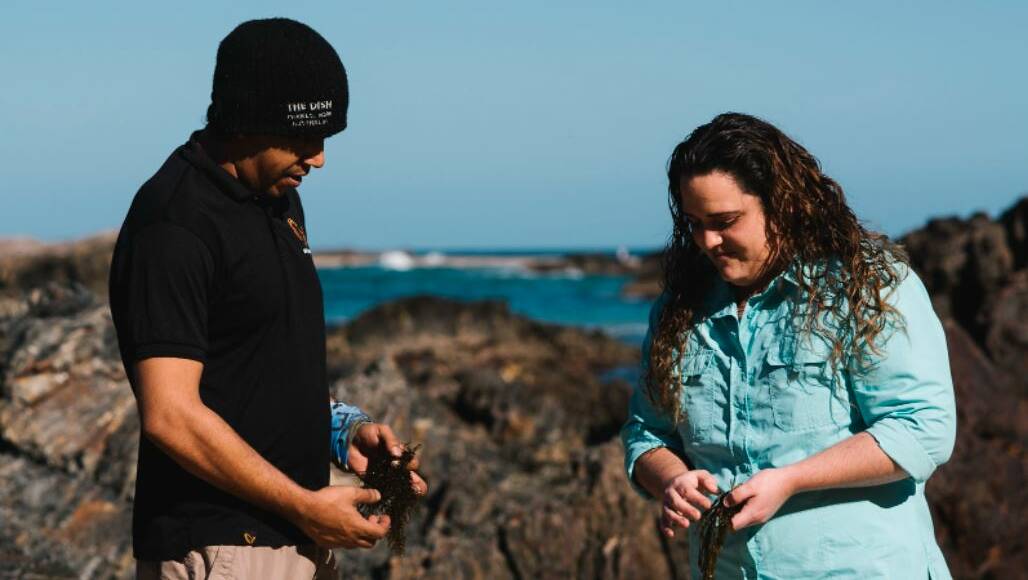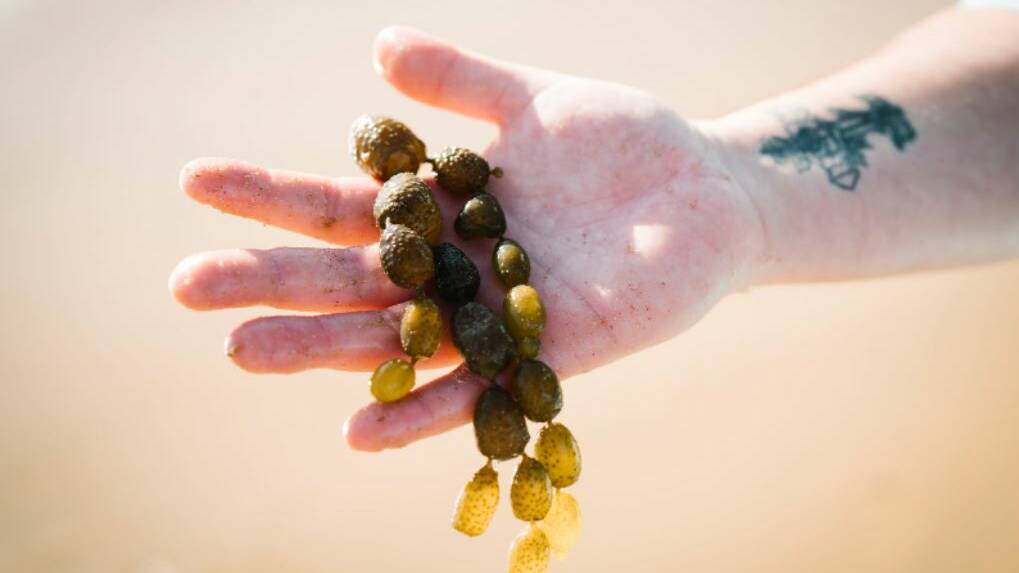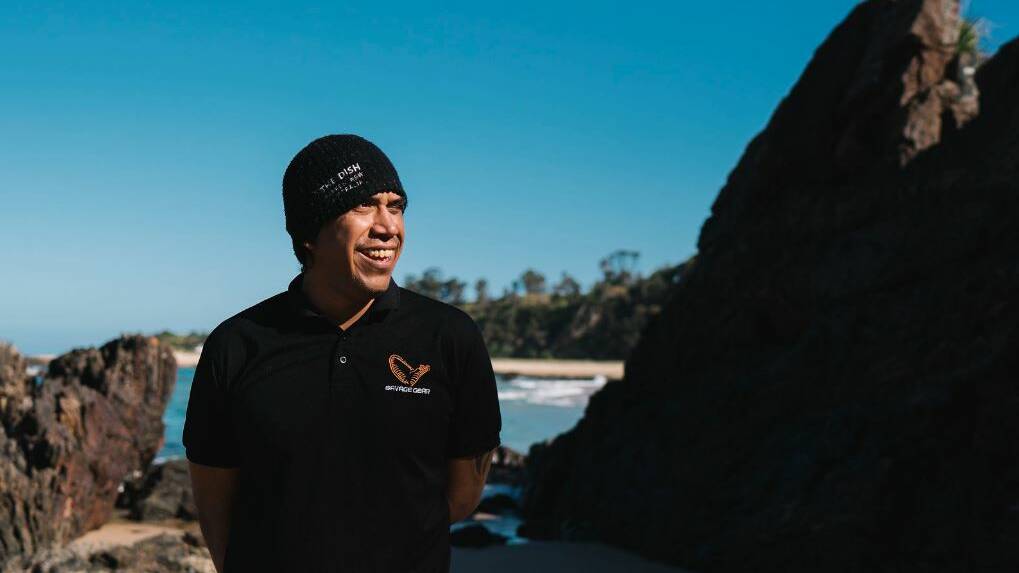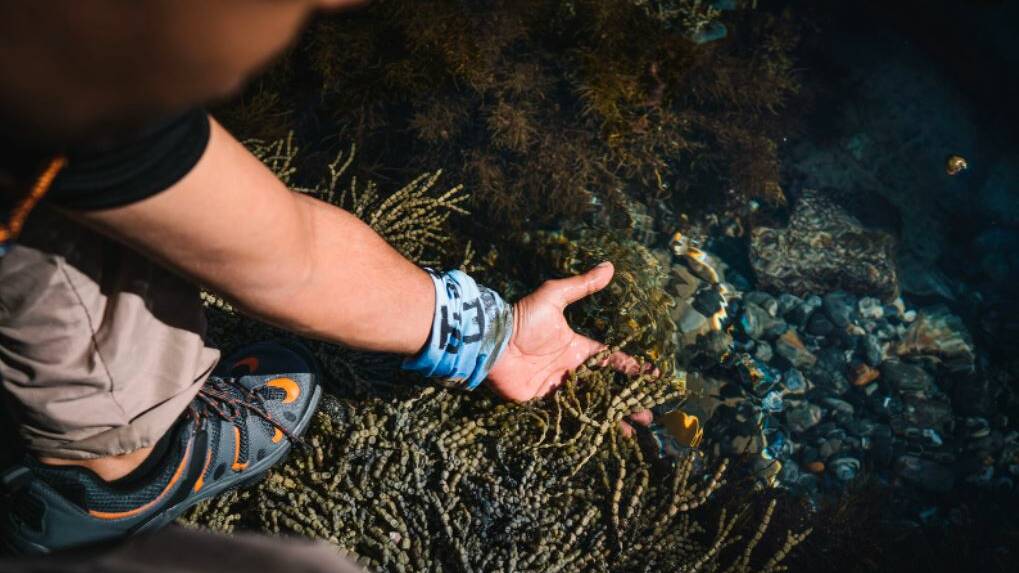
Did you know seaweed was traditionally used among Indigenous groups as a food source, for shelter, to make nets for fishing, for shoes and clothing, for cooking and transporting food, in ritual, and as medicine?
Subscribe now for unlimited access.
$0/
(min cost $0)
or signup to continue reading
Documentation of those traditional seaweed uses is the cornerstone of a research manuscript being prepared by Batemans Bay couple and co-founders of South Coast Seaweed Sarah and James Thomas, along with marine biology students from Macquarie University.
The couple co-founded their business in 2020 to revitalise traditional knowledge around uses of seaweed and use that knowledge to create sustainable and modern seaweed resources for the future.
"Our manuscript is going to be a history of seaweeds in Australia and it will touch base on their morphology, their cultural significance, their commercial purposes, their cosmetic uses, and their structural make-up and vitamins," said Ms Thomas.
The manuscript has already covered these bases for six specific species including golden kelp, Neptune's necklace, crayweed, gutweed, cactus caulerpa, and beautiful red forkweed.
"So we go out and identify the species and do the photography and then we sit down with the marine biology students who are helping us to put everything together," said Ms Thomas.

Neptune's Necklace for example, was traditionally used for its anti-inflammatory properties. Ms Thomas said it would be ingested to ease the pain for ailments such as swollen gums or arthritis.
The Wadawurrung people of Southern Victoria described eating "strings of sea grapes" as an accompaniment with seafood, which is most likely to be a reference to this species of seaweed.
RECENT NEWS:
As a food source it is high in polyunsaturated fatty acids. Ms Thomas suggests that as it needs to be eaten fresh as it will deteriorate quickly, but can also be pickled in brine to increase its shelf life for up to 12 months. Commercially, it has been included in lotions, medicine, and even ice-cream.
"Then we have crayweed which is used in traditional ceremonies and red seaweeds which are also used in different types of traditional ceremonies and food," said Ms Thomas.
These traditional knowledges and a drive to explore future opportunities within the seaweed industry have come from the couple's upbringing.

Mr Thomas is a saltwater man of the Yuin nation and grew up in Narooma. He is the eldest grandson of Anne and Guboo Ted Thomas - the last initiated South Coast tribal leader who fought for land rights at Wallaga Lake and Mumbulla Mountain (traditionally known as Biamanga).
For Mr Thomas activities such as camping, diving, and fishing were a big part of his upbringing on the coast and his grandfather passed down stories of using seaweed for fishing and to tell the weather.
Ms Thomas was born and raised on Kamilaroi Country, but her connection to Yuin Country and the ocean was fostered by her grandparents who moved to Mummaga Lake and owned one of the first houses there in the 1970s. Ms Thomas decided to move to the area herself around 15 years ago.
"All of the traditional knowledge has been shared from our families and passed down and over the last couple of years," said Ms Thomas.

South Coast Seaweed already produces its own sustainably harvested kelp salt culinary product.
"We have a permit to collect and harvest sea kelp in the Eurobodalla, across 28 locations, so we sort of mix and match depending on where the kelp and the tides take us."
The couple has been conducting research into the most ecologically sound ways to collect seaweed without negatively impacting regenerations efforts.
In addition to their research projects and foraged culinary products, they also engage in community education work, cultural tours and create artwork using the seaweed. But it doesn't stop there.
Sarah and James see the endless possibilities in the future of the industry, with cosmetics and pharmaceutical companies particularly interested in the properties of seaweed.
Their vision for the company would be to acquire an aquaculture farm through social impact farming opportunities for Indigenous businesses and create a viable industry on the South Coast that could then offer employment opportunities for other First Nations people.
"To start we just need some water lease space, so a couple of hectares would be a really good starting point and we could get some growing and seaweed production going.
"Once we start looking at the research and development, we could look at scaling it into a commercial sized farm and collaborating with a few of the other aquaculture farm companies and investors around Australia," said Ms Thomas.

The couple have definitely tapped into a booming market, the seaweed industry currently sits at around $20million, however it has been projected to be worth $100million within the next 10 years.
Our journalists work hard to bring you all the latest news and information. To support us please consider subscribing, which gives you unlimited access to ACM websites across the Far South Coast and The Canberra Times. To those who already subscribe, thank you. For anyone wishing to support the work we do, please subscribe by clicking here.


